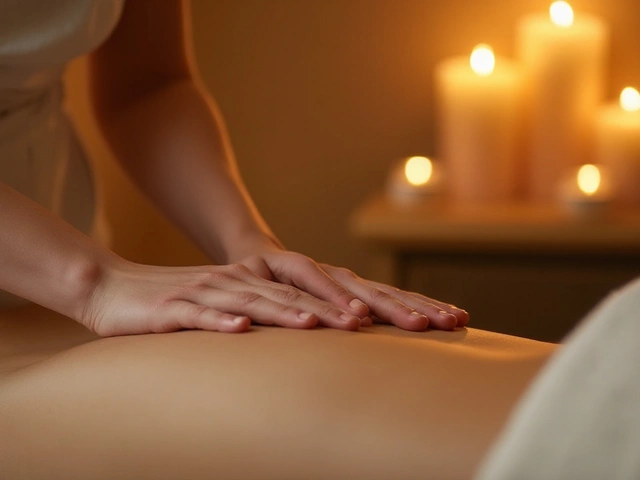Physiological benefits of massage and bodywork
Want less pain, deeper sleep, and faster recovery? Massage and bodywork do more than feel good. They change how your body works — from blood flow to nervous system balance. Here’s a clear, practical guide to what those changes look like and how to get them.
Immediate effects your body feels
First session usually brings obvious changes. Muscles relax and you feel looser because tension drops. Techniques like trigger point release and Amma massage reduce local muscle knots, which eases pain and restores range of motion. Heated treatments, such as warm stone therapy, widen blood vessels so circulation improves right away—oxygen and nutrients reach sore tissue faster.
Touch also calms the nervous system. Slow, rhythmic bodywork lowers heart rate and breathing, and can drop cortisol levels. That’s why people walk out feeling calmer and sleep better. Therapies focused on subtle movements—Feldenkrais or Ortho-Bionomy—retrain how your nervous system controls posture and movement, so you move with less strain over time.
Changes that build with regular care
Weekly or biweekly sessions add up. Consistent bodywork helps joints move more freely by loosening tight fascia and improving alignment. Structural methods like Hellerwork, Rolfing, and some forms of Kahuna nudge posture into healthier patterns. Better posture reduces chronic strain, which cuts down long-term pain.
Regular treatments support recovery after workouts and injuries. They speed metabolic waste clearance through better lymphatic flow and reduce inflammation around damaged tissue. That’s why athletes use sports massage and why people recovering from tendon or joint issues often report faster progress when paired with guided rehab.
There’s also a clear brain-body payoff. Lowered stress hormones improve immune function and mood. Palliative and therapeutic touch help people with serious illness feel more comfortable and regain small pleasures, not by curing disease, but by reducing pain and anxiety.
Want practical tips? Hydrate before and after a session—better circulation and lymph flow need fluids. Breathe deeply during treatments to deepen nervous system relaxation. Tell your therapist where it hurts and what feels better or worse; that feedback changes the session for the better.
How often? For chronic pain, plan weekly sessions for 6–8 weeks, then reduce to maintenance every 2–4 weeks. For general recovery and wellness, once a month keeps muscles and posture in check. If you’re trying a new method—Hilot, Lomi Lomi, or Feldenkrais—give it a few sessions to see lasting change.
Different methods target different needs. Use trigger point work for stubborn muscle knots, acupressure for headaches and tension, structural integration for posture, and gentle modalities like Ortho-Bionomy for chronic pain or sensitivity. Mix approaches if you need both immediate relief and long-term change.
Physiological benefits are real, measurable, and practical. With the right technique and a clear plan, massage and bodywork become tools you use to move better, sleep deeper, and live with less pain.

The Healing Power of Touch: A Deep Dive
Hi there! In this post, we're taking a deep dive into the fascinating world of touch and its healing power. We'll be exploring how this simple act can have profound physiological and psychological benefits. From easing pain and stress to enhancing our emotional well-being, the power of touch is truly transformative. Join me in uncovering the mysteries and science behind this remarkable, human connection.
Categories
- Health and Wellness (148)
- Alternative Therapies (86)
- Massage Therapy (40)
- Travel and Culture (15)
- Beauty and Skincare (9)
- Holistic Health (8)
- Health and Fitness (5)
- Spirituality (5)
- Other (2)
- Personal Development (2)



